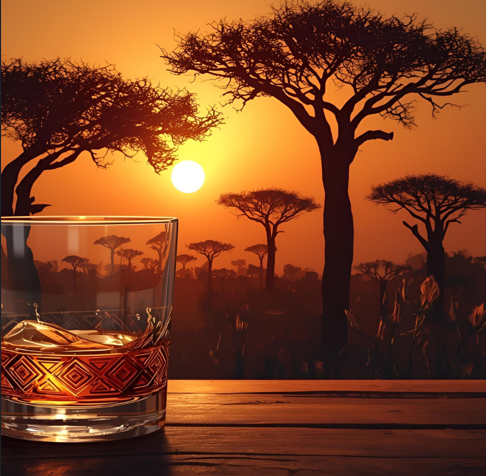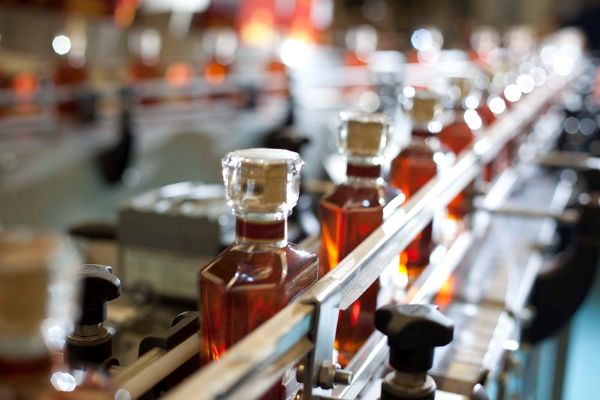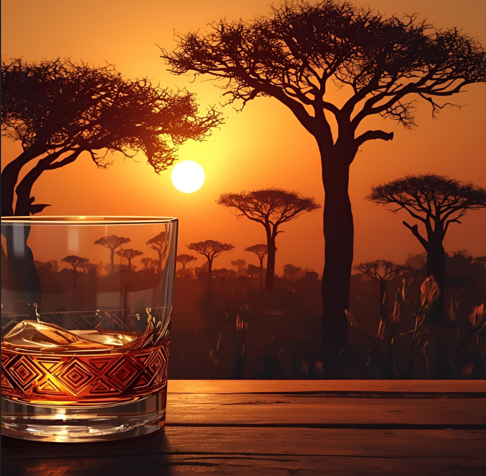Postcard from Southern Africa
Below the Sahara, Scotch faces big challenges from affordability and inflation to counterfeiting and fierce competition from the likes of Irish whiskey. Yet, as Ron Emler reports, the region's youthful demographics and rising middle class suggest no shortage of potential …
According to World Population Prospects the number of people living in Sub-Saharan Africa immediately before the coronavirus pandemic broke out was 1.1 billion. Today it is growing at a compound annual rate of 2.3% and the United Nations predicts that the region's population will at least double to between 2bn and 2.5bn by 2050.
With more than 40% of the region's population younger than 15 (with the exception of South Africa), the prospects for economic growth are large, especially as the World Bank estimates that in 25 years' time every fifth consumer on earth will be an African living in Africa.
Overall, alcohol consumption here has been on a consistently upward trend as the population swells, generating substantial spreading of areas as young, legal drinking age consumers move to the bigger cities such as Nairobi or Lagos where leading brands are more readily available.
But whereas the first choice a decade ago would have been Scotch whisky, the profile is changing with Cognac, vodka and Irish whiskey all enjoying significant increases in demand spurred by the young and dynamic middle class, and with the proportion of women drinkers growing.
They prioritise social status and image and are increasingly influenced by global trends.
That has seen the value of Scotch exports to Sub-Saharan Africa decline. HMRC figures show shipments falling from £179.6 million in 2015 to £140m last year, slumping by a third from their peak in 2022, when the world was engaging in its bout of post-Covid "revenge hospitality".

South Africa is by far the largest single market south of the Sahara, and accounts for 60% of the volume and 63% of the value of shipments last year, outstripping the next nine largest markets combined.
While being the leading market for historic, cultural and economic reasons, South Africa typifies many of the hurdles Scotland's distillers face in expanding their business in Southern Africa.
They include restricted distribution outside major urban and tourist centres, consumer resistance to price rises and trading down, fragmented marketing messages, rapid – sometimes overnight - changes to labelling and licensing requirements, parallel imports and downright faking.
Russell Menezes, IWSR's Market Research Director Africa & the Middle East, says: "Scotch whisky is expected to face continued headwinds, primarily driven by macroeconomic pressures and a lack of diversified marketing and investment strategies.
"Both blended and malt Scotch whiskies are forecast to decline across most price tiers. This trend is largely attributed to consumers shifting towards Cognac and Irish whiskey, which currently enjoy stronger brand equity and broader appeal," he says.
 Photo Credit: SWA
Photo Credit: SWA
"Irish whiskey has emerged as a formidable disruptor, posting exponential growth and directly competing with established Scotch labels."
At a time when South African wallets are under severe pressure, parallel imports and fake brands are also significant headaches for both importers and most African governments.
In addition, in the past couple of years heavy flooding and cyber-attacks have caused major disruption to the port of Durban so some shipments to South Africa have been diverted via Mozambique or trans-shipped via the Gulf.
During Covid, South Africa was one of the few countries to ban alcohol sales which meant illicit distilling became yet more widespread. The BBC even reported on pulped pineapple being fermented to produce cheap hooch.
But while moonshine is endemic in townships and the countryside, faking of leading brands using bottles, labels and capsules produced on an industrial scale in China, has become a huge dampener on growth.
A study in the spring by Euromonitor International in collaboration with the Drinks Federation of South Africa found that counterfeiting of international brands (not solely Scotch) was worth more than £1bn a year and costs the Pretoria government £700m a year in lost revenue.
In step with duties rising, the study found that over the past seven years the illicit alcohol industry has grown by 55% with the potential revenue shortfall to the state rising by 155%.
A less gloomy picture is emerging in Nigeria, where most consumption of Scotch takes place in Lagos, Abuja (the capital) and Port Harcourt, the centre of the oil industry.
High inflation and currency devaluation have meant that some brands have gone beyond general affordability, with demand for malts slumping and standard Scotch brands suffering from trading down, often to Indian whiskies.
But Charlie Winter, IWSC's senior market analyst, believes the Nigerian market will start to recover next year.
"The inflation rate is forecast to halve from 22% in 2027," he says, while an end to the war in Ukraine, which has hit fuel and grain prices "would bring much relief".
"The long-term forecast is for consistent, moderate growth as the middle class expands," he predicts.
Earlier this year, the World Bank urged the government to raise excise duties on goods such as alcohol, tobacco, and sugary drinks as a key requirement of the US$750m loan it granted to Nigeria, although Winter thinks this is "unlikely" to significantly impact Scotch consumption.
Demand in Kenya, the second largest market for Scotch, is extremely volatile due to economic pressure and political hostility.
In 2024 there were riots in protest at planned tax increases. Undeterred, the World Bank recommended an 117% increase in alcohol taxes in May taking them back to 2016 levels, adjusted for inflation. The Bank noted that alcohol contributes significantly to mortality and morbidity in Kenya.
In addition, the national government recently published proposals to raise the legal drinking age from 18 to 21, ban alcohol sales in supermarkets, online, and in many public spaces such as parks and residential areas. Other key changes include prohibiting celebrities and influencers from promoting alcohol, banning discounts and happy hours, and setting a minimum alcohol bottle size at 250ml to deter cheap, high-potency drinks.
IWSC's Winter says those restrictions are unlikely to be implemented and would not overly affect Scotch consumers, "but they remain a serious potential threat," he says.
"Tax increases tend to push parallel channels, mostly supplied from the Gulf, which have been growing and account for some 20% to 50% of the main imported brands," he says.
The Kenyan government was recently heavily criticised for not telling its right hand what the left was doing.
Having signed a free trade agreement with the UK setting customs duties at 25% on all imports, it then agreed with its East African partners of Uganda and Tanzania to put a 35% impost on all UK goods.
After diplomatic pressure from Britain, the level is due to be reduced back to 25%, which may encourage some parallel exporting via Kenya to the East African partners.
"That may boost Scotch", says Winter, "but competition from Irish and Canadian whiskey will keep growing."
Finally, elsewhere in Sub-Saharan Africa, Winter believes the Democratic Republic of Congo and Mozambique followed by Tanzania and Ethiopia look the most promising for Scotch, but adds that: "all are growing from small bases."

Ron Emler is a financial journalist who has observed the drinks industry for 50 years. Following a career on The Times and the Sunday Telegraph, he is consultant City Editor at The Drinks Business.
